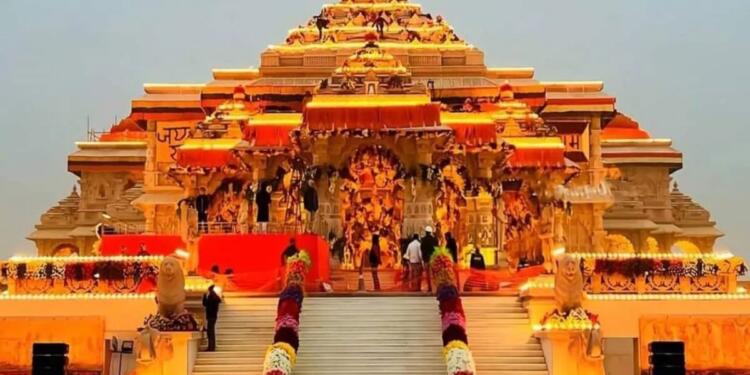The recent pilgrimage to Ayodhya by the Chief Minister of Assam, Himanta Biswa Sarma, has not only become a source of emotional solace for devotees of Lord Ram and supporters of the BJP but has also become a subject of significant political discussion. Sarma’s visit to the Hanumangarhi Temple and Ram Temple aimed to mitigate the tension following BJP’s loss and to reduce the resulting unrest.
The journey of Sarma and the local political landscape:
A BJP worker in Ayodhya perceived Sarma’s journey as a political maneuver. This journey not only showcased religious fervor but also held significant political implications. Sarma’s journey raised questions about how the Chief Minister of Assam successfully supported and executed the construction and endorsement of the Kamakhya Temple corridor without antagonizing the local populace. This question is crucial because, similar to Ayodhya, the development projects for the Ram Temple have caused financial losses to locals without adequate compensation.
Local dissatisfaction and demand for compensation:
BJP workers emphasized Sarma’s actions regarding compensation to Assam locals and advocated for similar steps. The primary reason for local anger is the lack of appropriate compensation. Where so much money is being spent, those who have suffered losses should be properly compensated.
BJP’s loss and Samajwadi Party’s victory in Ayodhya:
The defeat of BJP signals a significant political shift in Uttar Pradesh. Despite BJP’s homage to the Kar Sevaks, the Samajwadi Party emerged victorious, successfully inflicting damage on BJP based on caste lines. While the Congress rejected the invitation for the foundation stone laying ceremony of the Ram Temple, BJP’s loss has put it in a vulnerable position, despite its full support for the Ram Temple movement.
Social media outrage and the plight of Ayodhya residents:
Following the defeat of BJP by the Samajwadi Party, residents of Ayodhya faced a barrage of angry comments from supporters of BJP and devotees outside Ayodhya on social media. BJP is being viewed as an instigator of the Ram Temple movement. Understanding the sorrow, anger, shame, and guilt of Ayodhya residents and devotees outside Ayodhya is not difficult.
Political and social implications:
Taunting Ayodhya residents would create insecurity for the agenda that has always prevented Ram from leaving. Ayodhya residents represent a civilization of resilience. They have supported every effort to keep Ayodhya and the faith in Ram alive for centuries. The leftist media presents BJP’s defeat as a setback for Hindu temple builders. In this context, taunting Ayodhya residents would weaken their position.
BJP’s political strategy and future:
BJP will continue to be a target until it becomes weak and vulnerable in Lucknow. While the pilgrim outside Uttar Pradesh can rightly ask, “How can support for BJP be wrong in UP when it is the desire of all Indians towards Ram?” The statistics and psychology of Ayodhya cannot be easily extrapolated to the rest of India. Therefore, BJP’s loss in Ayodhya should not be considered a lack of nationwide support for BJP’s all-Indian endorsement of Ram.
The message of Sarma’s journey:
The Chief Minister of Assam visited Ram Temple and Hanumangarhi and told reporters, “We will also build temples in Assam. I invite everyone to come to Assam, and we all will come to Ayodhya. We all will come to see Lord Ram.” This statement could be an attempt to strengthen the BJP’s internal morale.
Conclusion:
The Ram Temple movement is not just a movement; it is a cultural mission. It includes discussions and dialogues with “others.” The sacred thoughts and concept of “Ram Temple” reside in Ayodhya. It is in Ayodhya that the new India and the victory of Ram Raj should be inspired. This is what has developed over 500 years.
ALSO READ: RSS Chief Mohan Bhagwat Calls for Attention to Manipur and Election Decorum































